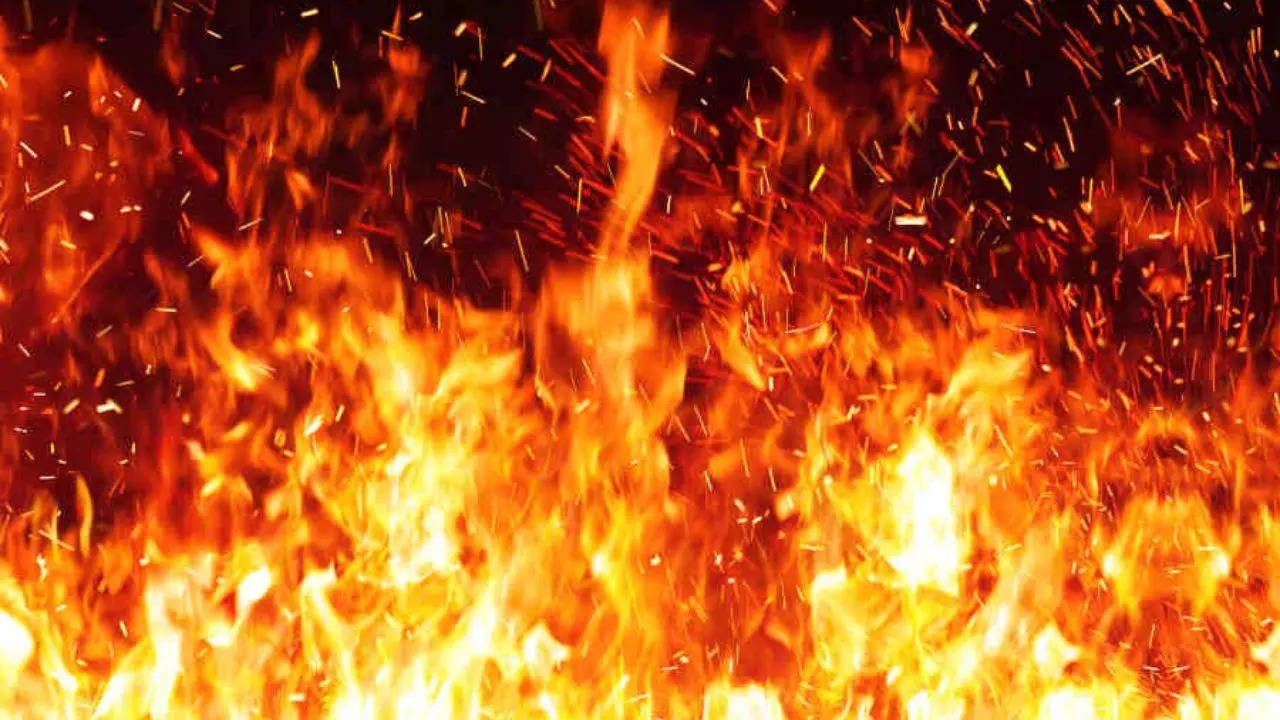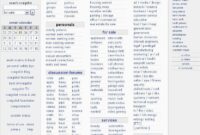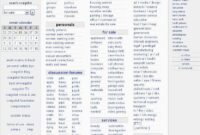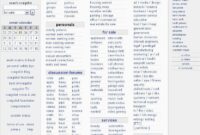Fire Brush Trucks For Sale: Your Comprehensive Guide to Acquiring Essential Wildland Apparatus pickup.truckstrend.com
In the escalating battle against wildfires, a specialized class of fire apparatus stands as a crucial first line of defense: the fire brush truck. These agile, robust vehicles are purpose-built to navigate challenging off-road terrain, rapidly deliver water and foam to remote ignition points, and provide crucial support in wildland-urban interface areas. For fire departments, private contractors, industrial facilities, and even large landowners operating in high-risk zones, acquiring a reliable brush truck is not merely a purchase—it’s an investment in safety, preparedness, and the protection of lives and property.
This comprehensive guide aims to demystify the process of finding and purchasing "Fire Brush Trucks For Sale." Whether you’re a seasoned fire chief looking to expand your fleet, a volunteer department on a tight budget, or a private entity requiring specialized fire suppression capabilities, understanding the nuances of these vital machines is paramount. We’ll delve into what makes a brush truck unique, where to find them, what to look for, and how to ensure your investment serves its critical purpose effectively.
Fire Brush Trucks For Sale: Your Comprehensive Guide to Acquiring Essential Wildland Apparatus
What is a Fire Brush Truck? Defining the Wildland Workhorse
A fire brush truck, often referred to as a "Type 6" or "Type 7" engine in the National Wildfire Coordinating Group (NWCG) classification system, is a specialized wildland firefighting apparatus designed for rapid response to brush, grass, and forest fires. Unlike larger structural engines, brush trucks are built on a commercial chassis, typically a 4×4 pickup or medium-duty truck, providing superior off-road capability, maneuverability, and ground clearance.
Their primary features include:
- Smaller Water Tanks: Ranging from 200 to 750 gallons, optimizing for agility rather than sustained attack.
- High-Pressure Pumps: Often featuring auxiliary or PTO-driven pumps capable of delivering high-pressure streams for effective penetration into brush and embers.
- Foam Systems: Class A foam proportioning systems are standard, significantly enhancing water’s effectiveness on wildland fuels.
- Compact Design: Allowing them to navigate narrow trails, dense vegetation, and steep inclines inaccessible to larger apparatus.
- Tool Storage: Ample compartments for hand tools (shovels, rakes, pulaskis), chainsaws, drip torches, and other wildland firefighting equipment.
- Crew Capacity: Typically designed to carry a smaller crew (2-4 firefighters).

Their importance lies in their ability to quickly reach and suppress fires in their incipient stages, preventing them from escalating into large-scale conflagrations. They are essential for initial attack, mop-up operations, and patrolling fire lines.

Why Consider "Fire Brush Trucks For Sale"? Benefits of Acquiring Used Apparatus
While brand-new brush trucks offer the latest technology and warranties, the market for "Fire Brush Trucks For Sale" often revolves around used apparatus. Acquiring a pre-owned brush truck presents several compelling advantages, particularly for organizations with budget constraints.
- Cost-Effectiveness: This is the most significant benefit. Used brush trucks can be purchased at a fraction of the cost of new models, freeing up valuable funds for other departmental needs, equipment, or training.
- Immediate Availability: Unlike new trucks, which can have lead times extending over a year, used apparatus are typically available for immediate purchase and deployment.
- Proven Durability: Many used brush trucks, especially those from well-maintained fleets, have already proven their reliability in real-world conditions. Their robust construction is designed for longevity.
- Customization Potential: Older models can be excellent platforms for customization and upgrades. Departments can add new lighting, communication systems, skid units, or storage solutions tailored to their specific operational needs.
- Reduced Depreciation: The steepest depreciation hit occurs in the first few years of a vehicle’s life. Buying used means you avoid this initial loss, making it a more financially sound investment in the long run.
- Environmental Benefit: Reusing an existing vehicle reduces the environmental impact associated with manufacturing a new one.

However, the benefits come with considerations, such as the potential for wear and tear, older technology, and the need for thorough inspection.
Key Features to Look For When Browsing "Fire Brush Trucks For Sale"
When evaluating "Fire Brush Trucks For Sale," a meticulous assessment of their features is crucial. Your choice should align directly with your operational environment, budget, and anticipated use.
-
Chassis and Drivetrain:
- 4×4 Capability: Absolutely non-negotiable for off-road operations.
- Ground Clearance: Higher clearance allows navigation over obstacles.
- Engine Type & Condition: Diesel engines are common for their torque and durability. Check for maintenance records, unusual noises, or leaks.
- Transmission: Automatic transmissions are prevalent for ease of operation in demanding conditions.
- Suspension: Heavy-duty suspension is essential for carrying water and equipment over rough terrain.
-
Water System:
- Tank Size: Typically 200-750 gallons. Consider the balance between water capacity and maneuverability.
- Pump Type:
- PTO (Power Take-Off) Driven: Reliable, uses the truck’s engine.
- Auxiliary Engine Driven: Independent of the truck’s engine, often more versatile.
- Ensure the pump has been regularly tested and maintained.
- Hose Reels & Nozzles: Look for at least one pre-connected attack line (often a booster reel) and compatibility with various nozzles (fog, straight stream, low-flow).
- Suction Capability: The ability to draft water from natural sources is a major asset in remote areas.
-
Foam System:
- Class A Foam Proportioner: Essential for wildland firefighting, as foam significantly enhances water penetration and effectiveness.
- Foam Tank Capacity: Usually 5-30 gallons.
-
Storage and Ergonomics:
- Compartmentation: Adequate, secure, and accessible storage for tools, personal protective equipment (PPE), and ancillary gear.
- Cab Layout: Comfortable seating for the crew, accessible controls, and good visibility.
-
Safety and Ancillary Equipment:
- Emergency Lighting & Sirens: Ensure they meet local regulations and are in good working order.
- Roll-Over Protection System (ROPS): Increasingly important for crew safety in rough terrain.
- Warning Lights: Front and rear scene lighting for nighttime operations.
- Winch: A front-mounted winch can be invaluable for self-recovery or clearing obstacles.
- Communications: Compatibility with your department’s radio systems.
Where to Find "Fire Brush Trucks For Sale"
The market for "Fire Brush Trucks For Sale" is diverse. Knowing where to look can significantly improve your chances of finding the right apparatus at the right price.
- Specialized Fire Apparatus Dealers: Many dealers specialize in new and used fire trucks. They often have a wide selection, offer financing, and may provide warranties on used equipment.
- Online Marketplaces:
- Dedicated Fire Truck Sites: Websites like FireTrucksForSale.com, FireApparatus.com, or usedfiretrucks.com are excellent starting points.
- Government Surplus Auctions: GovDeals.com, PublicSurplus.com, and local government auction sites frequently list retired municipal vehicles, including fire apparatus.
- General Heavy Equipment Sites: eBay, Craigslist (for local finds), and Facebook Marketplace can occasionally turn up listings, though vetting is crucial.
- Direct from Fire Departments: Departments upgrading their fleet often sell older apparatus directly. Networking with other departments or checking their official websites can uncover these opportunities.
- Auctions (Live & Online): Heavy equipment auctions, both online and in-person, are another avenue, though they require quick decision-making and often "as-is, where-is" terms.
- Word-of-Mouth & Networking: Sometimes the best deals are found through connections within the fire service community.
The Buying Process: A Step-by-Step Guide for "Fire Brush Trucks For Sale"
Acquiring a used brush truck requires diligence. Follow these steps to ensure a wise investment:
-
Assess Your Needs and Budget:
- Operational Environment: What type of terrain will it operate in? What are the typical fire conditions?
- Water Requirements: How much water do you realistically need on board?
- Crew Size: How many firefighters will it typically carry?
- Budget: Establish a clear budget for the purchase, including potential post-purchase repairs, upgrades, and transportation.
-
Research and Shortlist:
- Identify models and manufacturers known for reliability.
- Compare specifications and features of available trucks against your needs.
- Read reviews or seek advice from other departments.
-
Initial Inquiry and Documentation Review:
- Contact sellers to request detailed photos, specifications, and, most importantly, maintenance records and service history.
- A well-documented history is a strong indicator of a well-cared-for vehicle.
-
Thorough Inspection (Crucial Step):
- Physical Inspection: Inspect the chassis for rust, frame damage, or signs of accident. Check the body, compartments, and paint.
- Engine & Drivetrain: Look for leaks, listen for unusual noises, check fluid levels and clarity. Test the 4×4 system.
- Pump Test: If possible, have the seller demonstrate the pump’s operation. Test its prime, pressure, and flow. Verify it holds prime.
- Electrical System: Check all lights (emergency, scene, dash), sirens, radio, and auxiliary power systems.
- Tires & Brakes: Inspect tire condition, tread depth, and brake system components.
- Safety Features: Verify seatbelts, ROPS, and any other safety systems.
- Professional Assessment: If possible, hire an independent mechanic or fire apparatus technician to perform a pre-purchase inspection. This investment can save you significant costs down the road.
-
Negotiation:
- Be prepared to negotiate the price, especially if you identify issues during inspection.
- Consider the total cost, including any necessary repairs or upgrades.
-
Transportation and Legalities:
- Title Transfer: Ensure proper transfer of ownership documentation.
- Insurance: Arrange for insurance coverage before taking possession.
- Transportation: Plan for how you will get the truck to its new home. This might involve driving it or hiring a specialized transport company.
Maintenance & Ownership Tips for Your Brush Truck
Once you’ve acquired your brush truck, proper maintenance is key to ensuring its longevity and readiness for service.
- Routine Checks: Perform daily/weekly checks of fluids (oil, coolant, transmission, brake), tire pressure, and lights.
- Pump Maintenance: Regularly flush the pump with clean water. Winterize the pump system if operating in freezing temperatures. Test pump performance periodically.
- Engine Service: Follow the manufacturer’s recommended service intervals for oil changes, filter replacements, and tune-ups.
- Chassis & Suspension: Regularly inspect for wear and tear, especially after off-road use. Lubricate chassis components as recommended.
- Hose & Nozzle Care: Inspect hoses for damage, clean nozzles after use, and ensure they are stored properly.
- Battery Maintenance: Keep batteries charged and terminals clean.
- Annual Professional Servicing: Schedule a comprehensive annual inspection by a certified fire apparatus technician.
- Operator Training: Ensure all personnel operating the brush truck are properly trained in its unique capabilities and limitations, especially regarding off-road driving and pump operations.
Challenges and Solutions When Buying "Fire Brush Trucks For Sale"
While buying used offers significant benefits, it’s not without potential challenges.
- Challenge: Hidden Mechanical Issues.
- Solution: Conduct an extremely thorough pre-purchase inspection, ideally by an independent, qualified mechanic or fire apparatus specialist. Request all available maintenance records.
- Challenge: Outdated Technology.
- Solution: Factor in the cost of upgrading crucial systems like lighting (to LED), communication radios, GPS, or even replacing an older pump skid unit with a more modern one.
- Challenge: Rust and Corrosion.
- Solution: Pay close attention to the undercarriage, frame rails, pump mounting, and compartment bottoms, especially on trucks from regions that use road salt. Significant rust can compromise structural integrity.
- Challenge: Parts Availability for Older Models.
- Solution: Research the availability of common wear parts for the specific chassis and pump unit before purchasing. Reputable dealers may offer support for sourcing parts.
- Challenge: Lack of Warranty.
- Solution: Understand that most used sales are "as-is." Your best defense is a diligent inspection process and a realistic budget for potential immediate repairs.
Price Table: Representative Costs for "Fire Brush Trucks For Sale"
Please note: Prices for used fire apparatus can vary wildly based on condition, mileage, age, features, region, and market demand. This table provides estimated ranges for illustrative purposes only. Always conduct thorough research for specific listings.
| Type/Condition Category | Year Range (Approx.) | Tank Size (Gallons) | Chassis Type (Common) | Estimated Price Range (USD) | Key Features/Notes |
|---|---|---|---|---|---|
| Older/Basic Used | 1990s – Early 2000s | 200-400 | Ford F-350/F-550, Chevy | $15,000 – $40,000 | High mileage, may require significant mechanical updates, basic pump/foam system. |
| Mid-Range Used | Mid 2000s – Early 2010s | 300-500 | Ford F-550, Ram 5500, IHC | $40,000 – $85,000 | Moderate mileage, generally good condition, modern features, potentially some LED lighting. |
| Newer Used/Refurbished | Mid 2010s – Present | 400-750 | Ford F-550/F-650, Ram 5500, Freightliner | $85,000 – $150,000+ | Low mileage, excellent condition, advanced pump/foam, LED lighting, recent inspections. |
| Custom/Specialized | Varies (often newer) | 500-1000+ | Larger 4×4 chassis (e.g., F-750, IHC) | $100,000 – $250,000+ | Designed for specific needs (e.g., extreme terrain, larger capacity, specialized tools). |
Frequently Asked Questions (FAQ) About Fire Brush Trucks For Sale
Q1: What is the average lifespan of a fire brush truck?
A1: With proper maintenance, a well-built brush truck chassis can last 15-25 years or more, especially if it’s not a primary response unit. The pump and skid unit components can often be replaced or refurbished to extend the operational life even further.
Q2: Can I convert a standard pickup truck into a brush truck?
A2: While it’s possible to mount a small skid unit on a heavy-duty pickup, a true "brush truck" involves more than just a water tank. It requires a robust chassis, specialized suspension, proper weight distribution, and often a dedicated pump system. Professional conversion is recommended for safety and effectiveness.
Q3: Do I need special licensing to operate a brush truck?
A3: This depends on the truck’s Gross Vehicle Weight Rating (GVWR) and local regulations. Many smaller brush trucks (e.g., those built on F-550 chassis) can be operated with a standard driver’s license. Larger models may require a Commercial Driver’s License (CDL) with specific endorsements. Always check your local Department of Motor Vehicles (DMV) or equivalent authority.
Q4: What’s the difference between a brush truck and a water tender (tanker)?
A4: A brush truck is designed for initial attack and direct fire suppression with off-road capability and a smaller water tank. A water tender (or tanker) is primarily for water transport, carrying much larger volumes (1,000-4,000+ gallons) to supply other engines or fill drop tanks, and typically lacks significant off-road prowess or direct attack pumping capabilities.
Q5: How often should a brush truck be serviced?
A5: In addition to daily/weekly checks, the chassis (engine, transmission, brakes) should follow manufacturer’s recommended service intervals (e.g., every 5,000-10,000 miles or annually). The fire pump and associated systems should be professionally serviced and tested at least annually, and after any significant use.
Q6: Are parts readily available for older brush truck models?
A6: For common commercial chassis (Ford, Ram, Chevrolet, International), engine and drivetrain parts are generally available. Parts for the fire-specific components (pumps, valves, nozzles) can usually be sourced from fire equipment suppliers, though very old or obscure pump models might require more effort.
Conclusion
Acquiring "Fire Brush Trucks For Sale" is a strategic decision that can significantly enhance a department’s or organization’s wildland firefighting capabilities without breaking the bank. These specialized apparatus are indispensable for rapid response in challenging terrain, playing a vital role in preventing small fires from becoming catastrophic events.
By understanding what defines a brush truck, diligently exploring the market for used options, and meticulously inspecting potential purchases, you can secure a valuable asset that will serve your community or operations for years to come. Remember, the investment in a well-chosen and properly maintained brush truck is an investment in preparedness, safety, and the unwavering commitment to protecting our natural landscapes and the lives within them.



